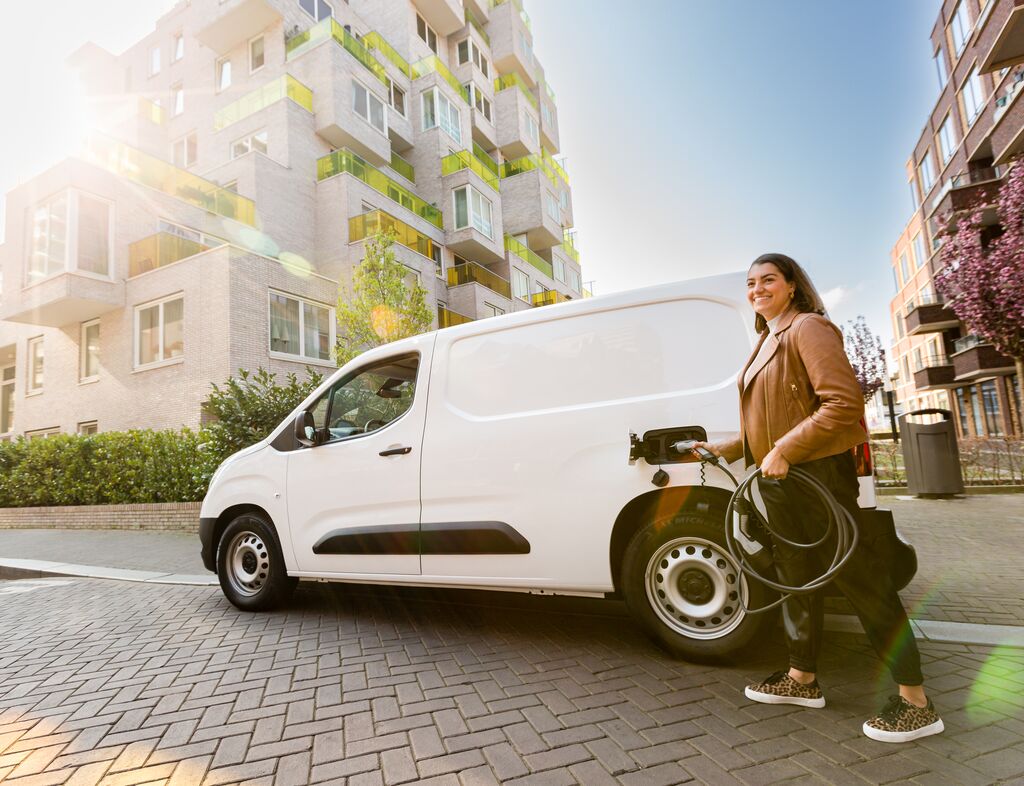With an ever-expanding choice of electrified vehicles to choose from, we’ve had a look at the pros and cons of the most popular technologies to see where they fit best.
With a 2035 deadline to phase out the combustion engine in new cars and vans, transport is electrifying quickly in the UK – but it’s not happening at once. The transition means drivers have a selection of technologies beyond the usual diesel and petrol options, and each has specific advantages. We’ve had a look at some important deciding factors below.
How often do you travel long distances?
High mileage needn’t be a barrier to going electric. Plenty of new cars offer more than 200 miles of range, usually with the ability to recover 80% of that in around half an hour at the fastest chargepoints. According to Zap-Map, there are 5,700 of these ‘rapid chargers’ in the UK [1], mostly located near to major routes. However, at busy locations, you might still need to wait for one to become available.
Plug-in hybrids avoid the queues. They offer a shorter electric range – typically around 30 to 40 miles – but have a combustion engine as a backup for long journeys, which means they can be refuelled like a regular petrol or diesel car. However, that’s the least efficient way to use one. Independent testing by Emissions Analytics showed average economy of 37.2mpg for a sample of plug-in hybrids once the electric range had been depleted [2].
In Summary:
Long journeys are still easier in a plug-in hybrid, but that convenience comes at a cost. With a little route planning to find the cheapest and least crowded charging spots, most new electric cars can handle regular long-distance use – and it could also be cheaper than using a plug-in hybrid.
Are you a company car driver?
The company car system is heavily weighted in favour of low-CO2 vehicles, especially those emitting 50g/km or less. Drivers pay Benefit-in-Kind on a percentage of the car’s list price, weighted by its CO2 emissions and their income tax rate (20% or 40%) [3]. That percentage is usually over 24% for a petrol or diesel car, compared to 2% for electric and between 8% and 14% for most of the current plug-in hybrids (depending on their electric range).
It’s an incentive large enough to outweigh the still-higher list price, as the following like-for-like examples show:
| Benefit-in-Kind | |||
| 20% | 40% | ||
| BMW X3 xDrive20d M Sport | Diesel | £278.48 | £556.97 |
| BMW X3 xDrive30e M Sport | PHEV | £130.07 | £260.14 |
| BMW iX3 M Sport | Electric | £20.94 | £41.87 |
| Kia Niro ‘3’ Hybrid | Hybrid | £135.94 | £271.88 |
| Kia Niro ‘3’ Plug-in Hybrid | PHEV | £65.91 | £131.82 |
| Kia e-Niro ‘3’ 64Wh | Electric | £12.47 | £24.93 |
In Summary:
Company car drivers (including those on salary sacrifice schemes) can make a sizeable tax saving by opting for a plug-in hybrid. However, the biggest savings are reserved for battery-electric vehicles.
Where will you charge?
The cheapest and most convenient place to charge a plug-in hybrid or electric car is at home. However, there’s a growing network of on-street chargepoints being rolled out for drivers who don’t have their own driveway [4], and employers are starting to provide charging facilities for employees too. Home, work and on-street charging is all backed by grant funding to help encourage drivers to switch.
Advances in electric vehicle range and charging speeds means it’s increasingly easy to make do without your own chargepoint. On average, UK cars travel 18 miles just per day [5] and it’s common for large shops and city centres to offer charging facilities, augmented by faster units for short top-ups. A 200-mile range could last all week.
Although they have a combustion engine, easy access to charging is perhaps even more important for plug-in hybrids as they’re at their most efficient when driven mostly in on battery power. Charged every day, a plug-in hybrid could be more efficient than its published figures – if the charging cable is rarely used, it could be less fuel efficient than a regular diesel or even a petrol car.
In Summary:
If you can’t charge at home or work, a plug-in hybrid could be a costlier option than a battery-electric vehicle. Public chargepoints are usually more expensive than plugging in where you park, and you’re likely to be using the combustion engine more often.
How often do you drive into London?
Exemptions for the London Congestion Charge changed on 24 October 2021. Since then, only vehicles which emit 0g/km at the tailpipe will be eligible for the Greener Vehicle Discount. For the first time, this means the £15 daily charge will apply to all plug-in hybrids, while electric vehicles will be charged to enter the zone from 25 December 2025 [6]. Applications for the residents’ discount are currently closed.
In Summary:
Changes to the Congestion Charge will mean it’s much more expensive for non-residents to take a plug-in hybrid into London, compared to an electric vehicle. This could also set a standard for other urban areas to follow over the coming years.
Do you need to tow?
Pulling heavy loads affects the efficiency and range of every car, regardless of what’s under the bonnet, but this can be a challenge for an electric car. Independent testing has showed that pulling a caravan can halve the range of an electric car [7], and charging spaces often aren’t designed with trailers in mind.
Plug-in hybrids bypass some of those compromises; they can be refuelled at a normal fuel station and usually have a higher maximum towing capacity than a similarly sized battery-electric car. However, they also can’t tow as much as an equivalent petrol or diesel vehicle. For example:
| Fuel Type | Max. Towing Capacity | |
| Mercedes-Benz GLC 300 d 4MATIC | Diesel | 2,500kg [8] |
| Mercedes-Benz GLC 300 de 4MATIC | Plug-in Hybrid | 2,000kg [8] |
| Mercedes-Benz EQC 400 4MATIC | Electric | 1,800kg [9] |
To find out more about towing with an electric car, take a look at our guide to towing with an electric car.
In Summary:
Lots of new electric cars can tow trailers, and instant pulling power means they’re well suited to it. However, it means sacrificing range and adding frequent charging stops during a long journey. If you’re towing regularly, a plug-in hybrid might make more sense – and there’s still merit in considering a diesel, too.
Could an electric or hybrid vehicle work for you?
To find out more about which vehicle type might suit your needs, visit our Driver EV Tool, available here.
REFERENCES:
[1] Zap-Map (2022). How many charge points are there in the UK. [online]. Available at: https://www.zap-map.com/statistics/#region [Accessed 11 May. 2022].
[2] Emissions Analytics. (2019). Plug-In Hybrids Without Behavioural Compliance Risk Failure. [online] Available at: https://www.emissionsanalytics.com/news/2020/1/8/plug-in-hybrids-without-behavioural-compliance-risk-failure [Accessed 11 May. 2022].
[3] HM Revenue & Customs. (2021). Company car benefit – the appropriate percentage (480: Appendix 2). [online] Available at: https://www.gov.uk/guidance/company-car-benefit-the-appropriate-percentage-480-appendix-2 [Accessed 11 May. 2022].
[4] Office for Zero Emission Vehicles (2021). Government powers up electric vehicle revolution with £20 million chargepoints boost. [online] GOV.UK. Available at: https://www.gov.uk/government/news/government-powers-up-electric-vehicle-revolution-with-20-million-chargepoints-boost [Accessed 11 May. 2022].
[5] Department for Transport (2021). National Travel Survey England 2020 Main Results. [online] Available at: https://assets.publishing.service.gov.uk/government/uploads/system/uploads/attachment_data/file/1019462/nts-factsheet-2020.pdf [Accessed 11 May. 2022].
[6] Transport for London. (n.d.). Discounts and exemptions. [online] Available at: https://tfl.gov.uk/modes/driving/congestion-charge/discounts-and-exemptions [Accessed 11 May. 2022].
[7] Norsk Elbilforening. (2019). The very first test of three electric cars with caravans. [online] Available at: https://elbil.no/the-very-first-test-of-three-electric-cars-with-caravans/ [Accessed 11 May. 2022].
[8] Mercedes-Benz UK (2021) The GLC SUV and Coupé. [online] Available at: https://tools.mercedes-benz.co.uk/current/passenger-cars/e-brochures/glc.pdf [Accessed 11 May. 2022].
[9] Mercedes-Benz UK (2021) The EQC. [online] Available at: https://tools.mercedes-benz.co.uk/current/passenger-cars/e-brochures/eqc.pdf [Accessed 11 May. 2022].




